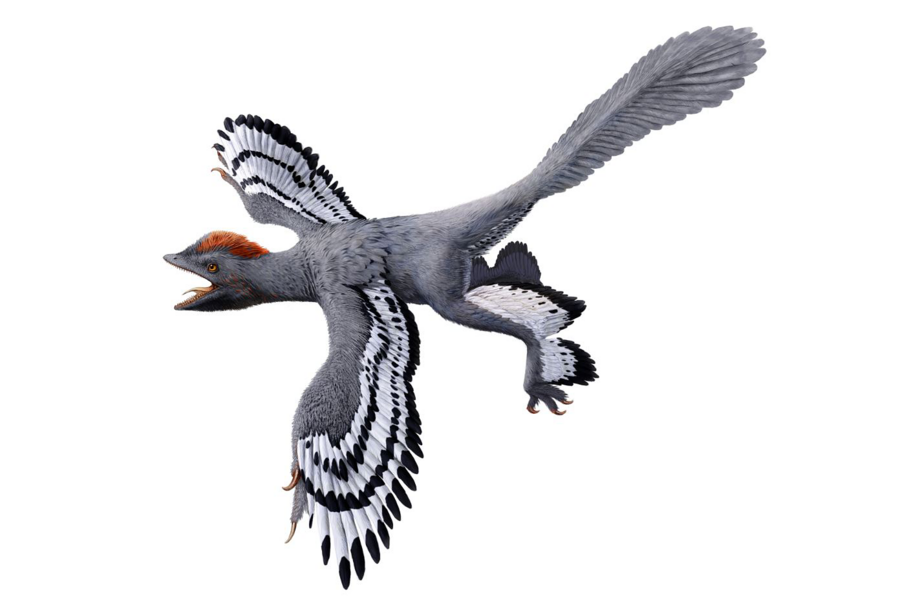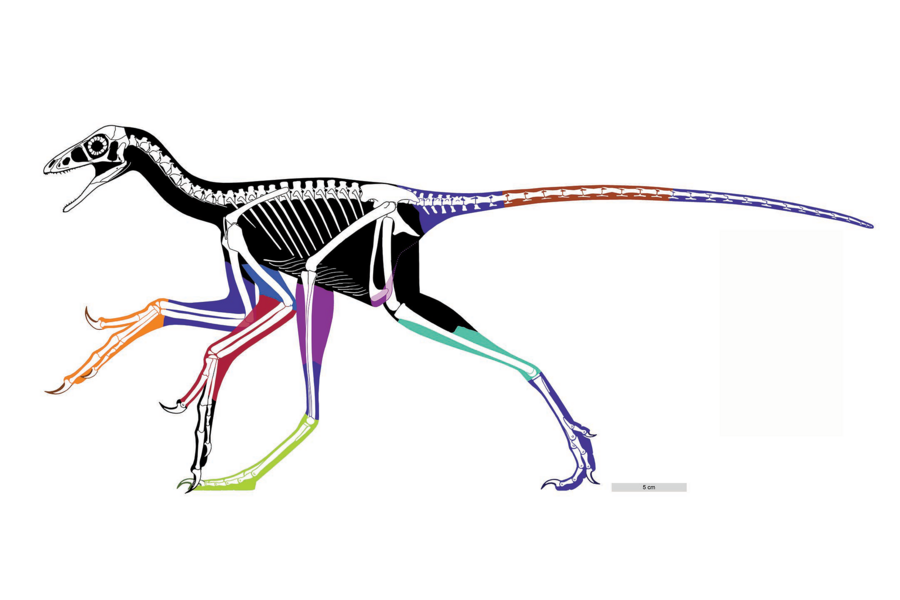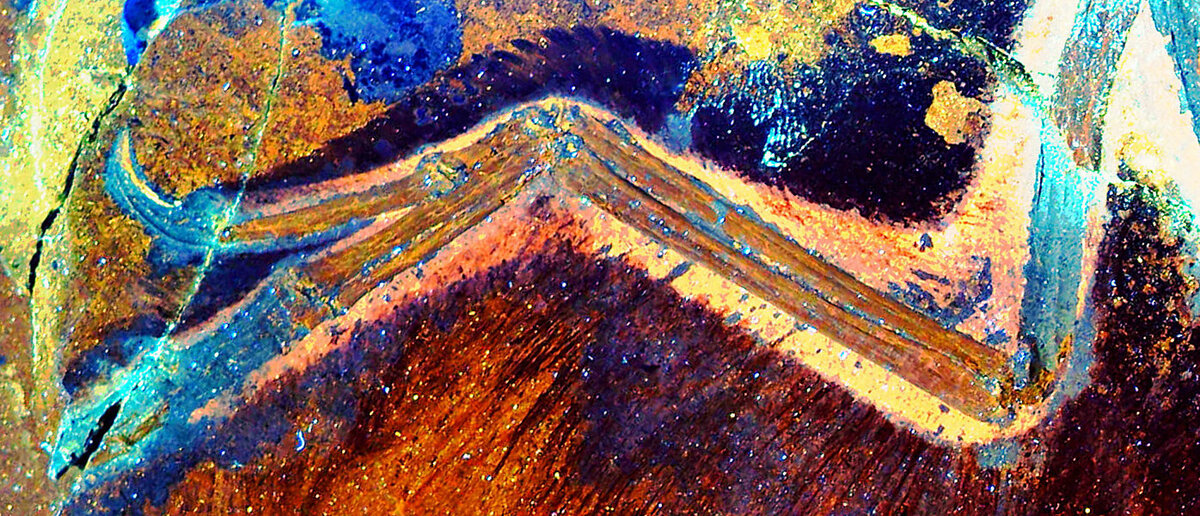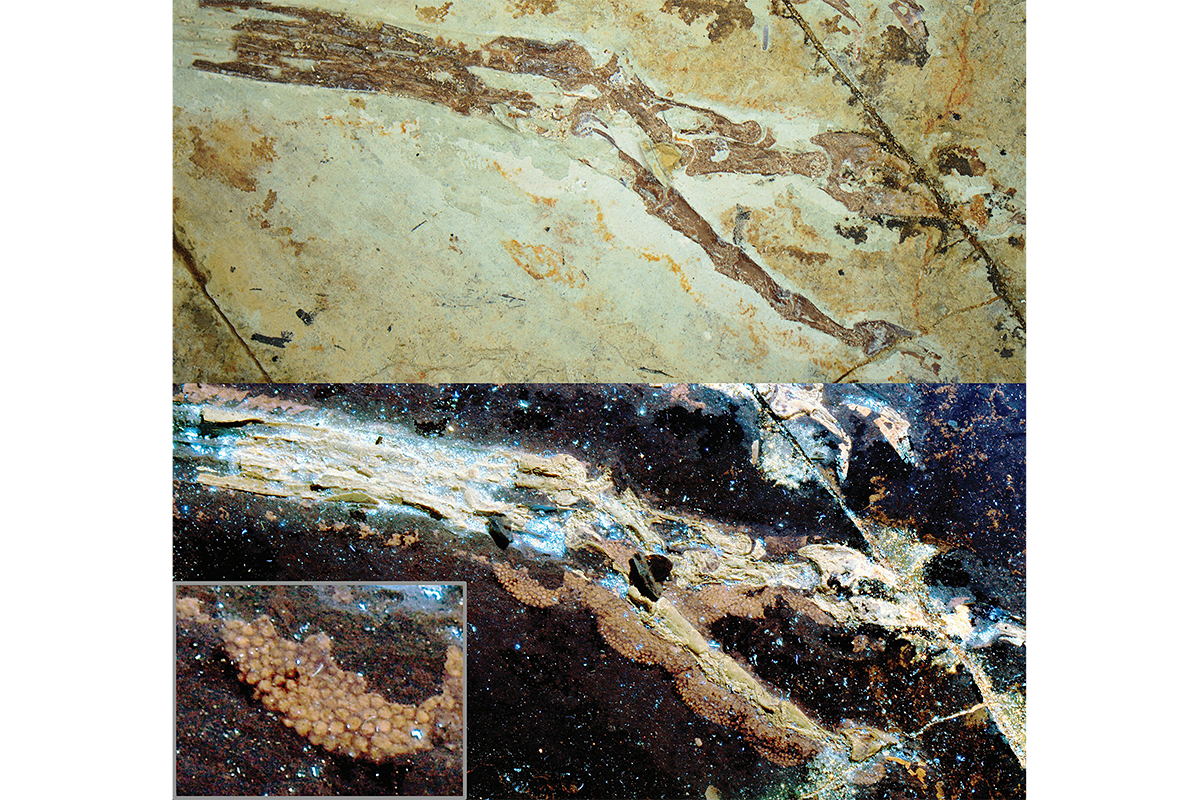How lasers are helping flesh out what dinosaurs actually looked like
Loading...
The combination of dinosaurs and lasers may sound like the next blockbuster science fiction movie. But for paleontologists, the two together might mean finding hard evidence of what the prehistoric beasts actually looked like.
Dinosaur fossils are mostly bone because that's what preserves best over millions of years, but the dinosaurs themselves were also flesh, blood, skin, and feathers when they lived. Now, scientists are pointing laser beams at fossils to flesh out our view of the long-extinct animals.
"This is a new way to actually see the dinosaur, besides the bone. If you want to see one, we can show you one," says Thomas Kaye, who pioneered this technique for analyzing fossils.
The powerful lasers actually make the fossils glow, allowing scientists to snap pictures of the specimens that contain more detail than can be spotted with the naked eye or other existing techniques, and reveal the fleshy body outline of the animal.
In a new study, Mr. Kaye and a team of paleontologists have turned their lasers on the fossils of a four-winged, feathered dinosaur that sits in a key evolutionary position among the early relatives of birds. "Anchiornis is especially suited for this study because its contribution to understanding avian and flight origins has not been fully realized," the scientists write in a paper published Tuesday in the journal Nature Communications.
The new laser-created snapshots of Anchiornis revealed that the animal once had drumstick-shaped legs, a slender tail, and birdlike arms. The lasers also revealed that remarkably birdlike footpads were also well-preserved in some of the 160-million-year-old specimens.
These key similarities suggest that paleontologists aren't wrong to draw comparisons between modern birds and the fossil specimens, Kaye explains in a phone interview with The Christian Science Monitor.
One big question about Anchiornis is whether it could fly or glide – or neither. Although that question is still far from settled, the lasers did reveal an intriguing clue. In modern birds, a flap of flesh in the elbow of their wings, called the propatagium, is thought to be necessary for flight. The lasers lit up flesh in just that spot in the Anchiornis fossils.
This "drives home just how bird-like some of these feathered dinosaurs were," Stephen Brusatte, a paleontologist at the University of Edinburgh who was not involved in the research, writes in an email to the Monitor.
"But at the same time, the wings were slightly different – the feathers were arranged more chaotically instead of in an ordered fashion," Dr. Brusatte adds.
"So it seems like Anchiornis had a somewhat more primitive wing than modern birds. Maybe that type of wing was an intermediate stage in the evolution of the modern bird wing, or maybe it was a totally separate experiment in dinosaur flight," he says
Although the propatagium wasn't visible without the lasers, the new technology just confirmed what paleontologists expected to see.
"They're not changing our view or our understanding of avian evolution or the evolution of flight," says Peter Makovicky, associate curator of dinosaurs at the Field Museum of Natural History in Chicago, who was not involved in the research.
But the new research does contribute something vital, he says in a phone interview with the Monitor. "Those things went from being inferences to being observations now, which is very important."
Like hard evidence to convict a suspect in a crime, Kaye adds, paleontologists need physical proof, and the lasers are revealing it.
How exactly do lasers shine a new light on these old bones?
The technique, called laser-stimulated fluorescence (LSF) imaging, harnesses the intensity of lasers to get fossils to fluoresce.
Photons, or light particles, interact with different atoms and molecules differently. When a photon hits a molecule, it is re-emitted in a different color depending on the make-up of that molecule.
It's kind of like bouncing a ball against the ground, Kaye explains. Different rocks, dirt, flooring, cement, or other materials will make the ball bounce back at different speeds.
In a fossil, different types of preserved tissue will cause the laser's light to re-emit at different wavelengths, making it glow in spectacular colors.
So the scientists point a laser at a fossil in a dark room, use a specially-outfitted camera to snap a picture, then look to see where the fossil is glowing in different colors.
"It doesn't tell you exactly what it is," Kaye says, "but it tells you that it's different," identifying a spot in the fossil where paleontologists can take a closer look using other techniques.
"It's a technical leap forward," Dr. Makovicky says. Paleontologists have bathed fossils in normal ultraviolet light to try to find intriguing fluorescence for more than a century, he says, "but these guys have taken it to the next level by applying a laser and gotten even more signal out of the data than we could before."
Brusatte agrees that LSF takes this kind of analysis of fossils to the next level. "It's like if there was a new type of Mars Rover with an ultra-powerful camera that can take the best images of Mars that we've ever seen," he says. "That's the equivalent here with dinosaurs."
Kaye has been working with lasers for years, but says the technology to use them on fossils has only recently emerged. Lasers were initially in red light, which wasn't powerful enough to make the specimens glow. Then they became green light, then blue, and now violet, he says, so now they're ready to be added to paleontologists' toolboxes.
Currently, Kaye and colleagues are working their way through specimens that have already been collected and are exceptionally preserved. "It's pretty cool," he says. "We actually walk through a museum at night with the lasers. Very sci-fi."
The researchers shine their lasers at fossils through glass cases and see what lights up. If anything looks intriguing, they'll ask curators to take a closer look.
The next step, Kaye says, is to set up the lasers for fieldwork. "We're going to fly one on a drone pretty soon," he says.









